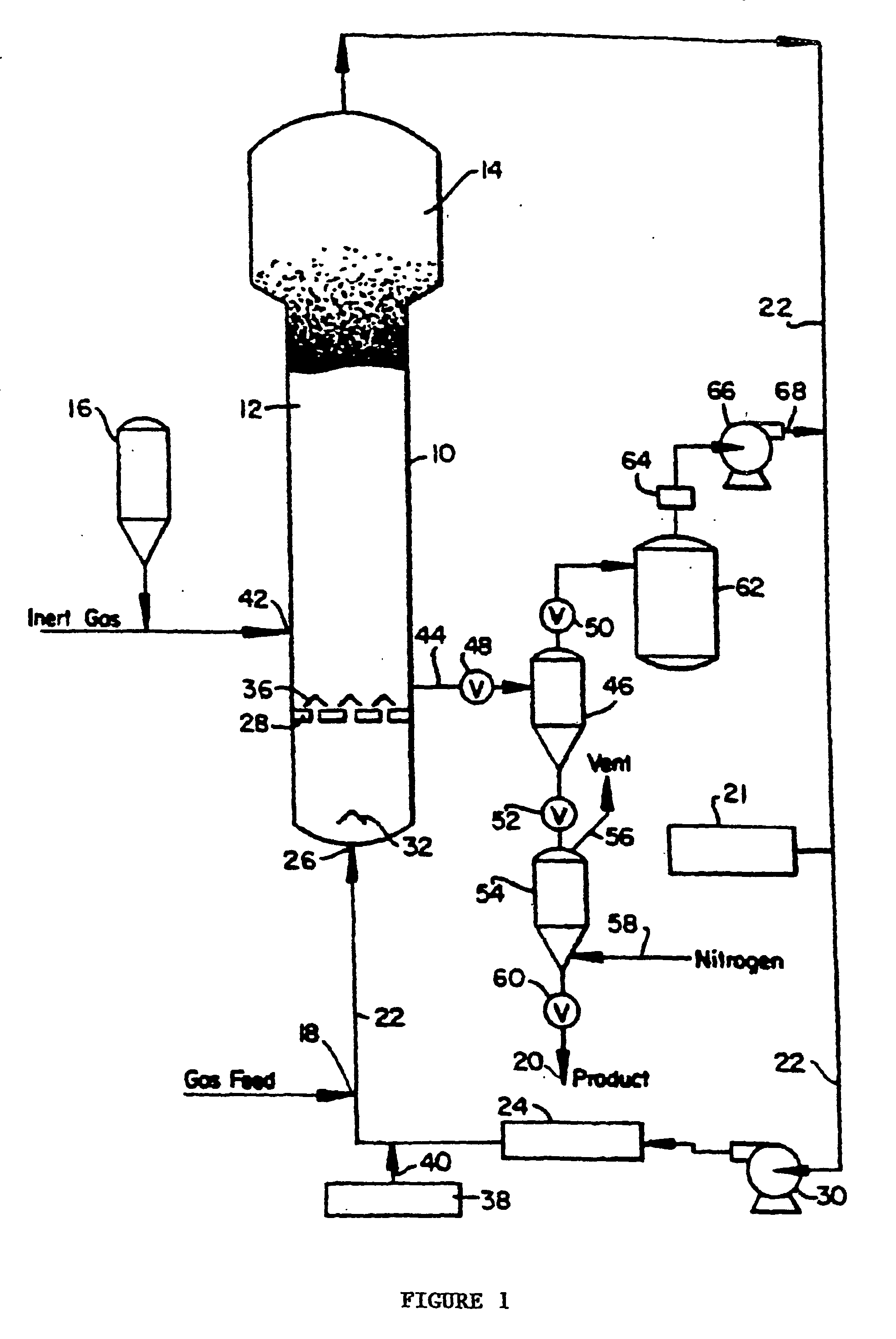Gas phase polymerization and method of controlling same
a technology of gas phase and polymerization, applied in the direction of chemical recycling, etc., can solve the problem that the temperature of the vessel cannot be allowed to increas
- Summary
- Abstract
- Description
- Claims
- Application Information
AI Technical Summary
Benefits of technology
Problems solved by technology
Method used
Image
Examples
example 1
[0193] A gas phase polyethylene process is operated at a temperature of 87° C. and pressure of 20.7 bar with the following gas composition:
Isopentane5.3 mol %Ethylene 31 mol %Ethane2.4 mol %n-Hexene3.4 mol %Hydrogen4.5 mol %Nitrogen53.4 mol %
[0194] The reactor inlet temperature is 50° C. and the inlet pressure is 21.4 bar. The process is operating at a production rate of 26,000 kg / hr. External constraints exist limiting the reactor to the current production rate. However, the above gas composition is capable of producing 28,000 kg / hr based on available reactor cooling. There is an excess of isopentane (induced cooling agent) in the recycle gas. The amount of isopentane in the gas composition that provides the cooling required to produce 26,000 kg / hr cooling is 4.1 mol %. Therefore, the gas composition is adjusted to reduce the amount of isopentane in the gas composition to 4.1 mol %.
example 2
[0195] A gas phase polyethylene process is operated at a temperature of 85° C. and pressure of 20.7 bar with the following gas composition:
Isopentane1.2 mol %Ethylene 33 mol %Ethane 1 mol %n-Hexene4.8 mol %Hydrogen4.7 mol %Nitrogen55.3 mol %
[0196] The reactor inlet temperature is 33° C. and the inlet pressure is 21.4 bar. The process is operating at a production rate of 36,000 kg / hr. The reactor is cooling limited, therefore the production rate is limited to 36,000 kg / hr. However, if there were no cooling limitation, the reactor could reach a production rate of 38,000 kg / hr based on non-cooling reactor constraints. The amount of isopentane (induced cooling agent) in the gas composition that provides the increased cooling required to produce 38,000 kg / hr cooling is 2.3 mol %. Therefore, the gas composition is adjusted to increase the amount of isopentane in the gas composition to 2.3 mol %, which subsequently increases the production rate by 2,000 kg / hr.
[0197] As demonstrated ab...
PUM
| Property | Measurement | Unit |
|---|---|---|
| density | aaaaa | aaaaa |
| temperatures | aaaaa | aaaaa |
| density | aaaaa | aaaaa |
Abstract
Description
Claims
Application Information
 Login to View More
Login to View More - R&D
- Intellectual Property
- Life Sciences
- Materials
- Tech Scout
- Unparalleled Data Quality
- Higher Quality Content
- 60% Fewer Hallucinations
Browse by: Latest US Patents, China's latest patents, Technical Efficacy Thesaurus, Application Domain, Technology Topic, Popular Technical Reports.
© 2025 PatSnap. All rights reserved.Legal|Privacy policy|Modern Slavery Act Transparency Statement|Sitemap|About US| Contact US: help@patsnap.com



